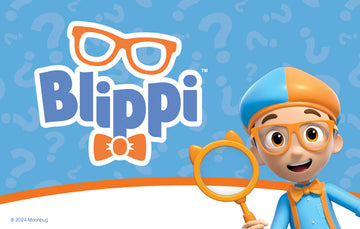Toddlers often express frustration and strong emotions through tantrums. These outbursts can be hard for caregivers to handle, especially when they happen frequently or in public.
Understanding effective ways to manage toddler tantrums helps reduce stress for both children and adults. Knowing how to respond calmly and consistently makes it easier to guide toddlers through their emotions.
1) Stay calm and composed during tantrums
When a toddler throws a tantrum, it is important for caregivers to remain calm. If they get upset, it may make the child more emotional. Staying calm helps set a steady example for the child to follow.
Taking deep breaths or counting quietly can help adults keep control of their own feelings. This shows the child that the situation is safe and manageable.
Caregivers should use a soft, steady voice to speak. Yelling or reacting angrily can make tantrums worse. Calm words can help soothe the child.
It can help to remember that tantrums are normal for toddlers. They often use them to express frustration or tiredness. Keeping calm helps caregivers handle these moments better without making things worse.

2) Use distraction with a favorite toy or activity
When a toddler starts to have a tantrum, shifting their focus can help calm them down. Using a favorite toy or activity can catch their attention and stop the meltdown before it grows worse.
Experts say distraction works because toddlers have short attention spans. If they can concentrate on something fun, they forget what upset them. This can break the cycle of frustration and crying.
Parents should pick a toy or game their child enjoys. It should be something easy to bring along, like a small stuffed animal or a picture book. Offering it at the start of a tantrum gives the child a new thing to think about.
Sometimes, moving to a different place helps too. Changing the environment while introducing the toy can make the distraction stronger. It helps the child feel fresh and more willing to engage.
Distraction is not about ignoring feelings but guiding the child toward calmness. Over time, it teaches them to manage their emotions better.
Make every moment memorable with our adorable Seasonal Kids Clothing Sets . Dress your little ones in the perfect outfits for any time of year!
3) Offer choices to give a sense of control
Toddlers often feel frustrated because they have little control over their day. Giving them simple choices can help reduce tantrums by letting them feel more in charge.
Choices should be easy and limited, like picking between two snacks or choosing which shirt to wear. This prevents them from feeling overwhelmed.
When toddlers decide, they build confidence. It also teaches them decision-making skills in a safe way.
Parents should keep the options acceptable and reasonable. That way, the child’s choice fits within the family’s rules and routines.
Offering choices helps toddlers learn cooperation. It also shows respect for their feelings and opinions, which can calm their emotions.
This method does not work as a way to avoid all limits but supports easier transitions and better mood during daily activities.

4) Validate feelings by naming emotions
When toddlers have tantrums, they often cannot express their emotions clearly. Naming the feelings they might be experiencing helps them feel understood. For example, saying “You seem angry” or “It looks like you are sad” shows the child that their emotions are noticed.
This technique helps toddlers learn to identify their own emotions over time. It also teaches them that having strong feelings is normal and okay. When a caregiver names emotions calmly, it builds trust and helps the child calm down faster.
Experts say that validating feelings reduces the intensity of tantrums. It shifts the focus from the child’s behavior to their emotions. This makes it easier for toddlers to manage their feelings and reduces frustration for both the child and the parent.
Discover amazing finds without breaking the bank in our Budget Friendly collection. Style your family for less with these incredible deals!
5) Set clear, consistent boundaries
Toddlers need clear rules to feel safe and understand what is expected. When boundaries stay the same, children learn faster what behaviors are okay and which are not. Consistency helps reduce confusion and frustration.
Parents should calmly explain the rules every time something happens. For example, if a toddler is told not to hit, this rule should be repeated in every similar situation. Changing rules often can make tantrums worse.
It is important for adults to follow through with consequences. If a boundary is crossed, a short, calm consequence helps the child know the behavior has results. This teaches responsibility.
Clear and consistent limits give toddlers a sense of control. Knowing what is allowed helps them manage their feelings better. This can lower the number of tantrums over time.
6) Use time-outs effectively and calmly
Time-outs can help a child calm down when they are having a tantrum. It gives them a chance to stop and think about their feelings. The key is to stay calm and clear when using time-outs.
The adult should explain briefly why the time-out is needed. For example, “You need a time-out because you hit.” Then, the child is asked to sit quietly in a safe, simple spot for a short time.
Time-outs should be short. One minute per year of the child’s age works well. For example, a two-year-old gets two minutes. After the time-out, the adult talks calmly with the child about better ways to act.
It’s important to use time-outs without anger. They are not a punishment but a way to help the child learn self-control. Being calm helps the child feel safe and understand the limits clearly.

7) Implement a reward system for good behavior
A reward system helps toddlers understand what behavior is expected. It encourages them to repeat good actions by giving positive feedback. Rewards can be small, like stickers or extra playtime.
This approach teaches toddlers to connect good behavior with positive outcomes. It also helps reduce tantrums over time. Parents should be consistent and clear about what earns a reward.
Rewards do not always need to be material things. Praise, hugs, or special attention can be effective. The key is to recognize and celebrate good moments quickly.
Using a chart with stickers or marks can motivate toddlers. They can see their progress over days or weeks. This visual tool helps make the idea of rewards real and simple to follow.
Dive into a sea of style with our versatile Blue Top collection. Find your perfect shade and elevate any outfit.
Embracing Calm and Connection Amidst the Storm
Toddler tantrums, while challenging, are a normal part of development. By implementing these seven strategies – from creating a calm environment to validating their feelings and offering choices – you're not just managing meltdowns, but fostering emotional intelligence and strengthening your bond. Remember, patience and consistency are your greatest allies.
As you navigate these turbulent times, ensure your little one is always comfortable and ready for any adventure (or tantrum!). Explore our adorable and practical Baby Rompers collection, perfect for fuss-free dressing and play.





